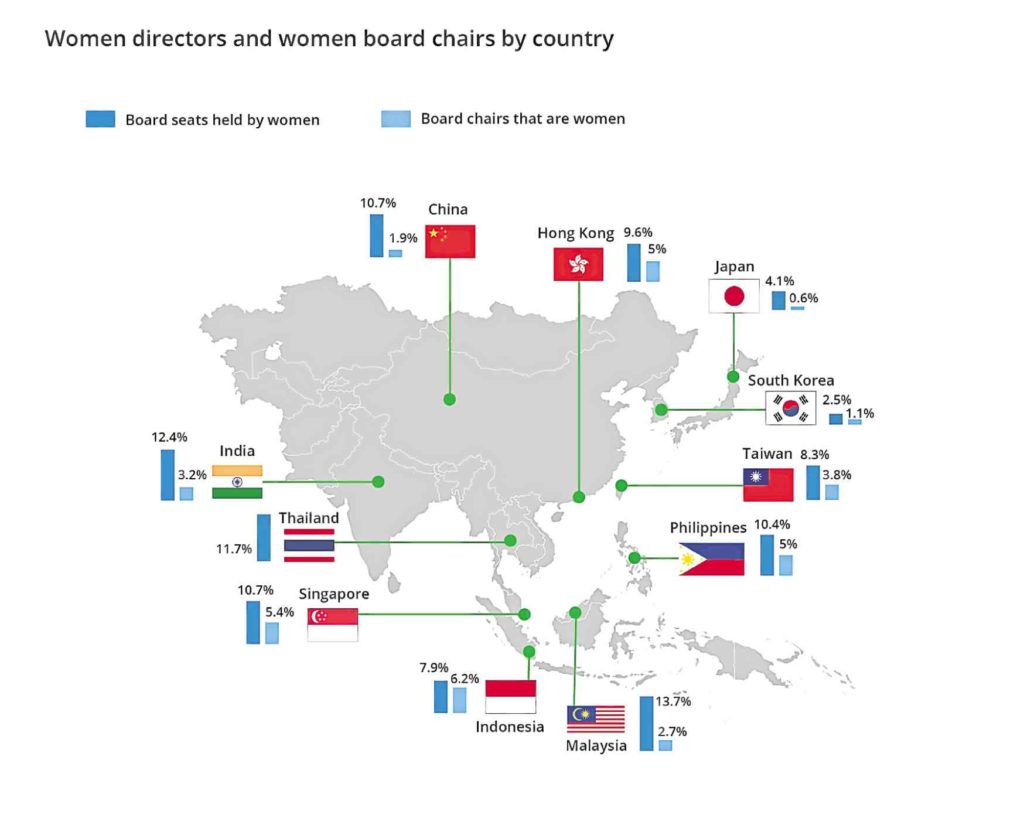
Despite being hailed last year as “the best performing nation” when it comes to improving gender diversity in the workforce, the Philippines barely saw an increase in the number of women on corporate boards this year.
This is according to a study by Deloitte Global that was recently released by Navarro Amper & Co., local member firm of Deloitte Southeast Asia Ltd., which “explores the efforts of 64 countries to promote boardroom diversity.”
The study, titled “Women in the Boardroom: A Global Perspective,” says the Philippine status of gender diversity in corporate boards hardly differs on an international scale.
Globally, 15 percent of board seats are held by women, representing only a 3-percent increase compared to results in the study’s 2015 edition. The same percentage increase can be seen locally, where women occupy only a little over 10 percent of board seats, says the report.
This, despite the Philippines outperforming other countries in the East Asia and Pacific region on the 2016 Global Gender Gap Index, the report adds.
When looking at the whole of Asia, the picture is bleaker: Barely 8 percent of board seats are occupied by women, “suggesting that they are still largely underrepresented on corporate boards,” says the report.
There is a silver lining, however, for this region, as the study also revealed that all countries—save for Vietnam, which was not included in the 2015 edition—displayed a general improvement in boardroom diversity. India had the biggest increase in the number of female board members, from 7.7 percent in 2015 to 12.4 percent this year.
Asian countries included in this year’s report are China, Hong Kong, India, Indonesia, Japan, Korea, Malaysia, Singapore, Taiwan, Thailand, Vietnam and the Philippines. Among these, only India and Malaysia have quotas for women on boards, “with the latter consistently outperforming its Asian peers in terms of board seats held by women: 10.4 percent in 2015, and 13.7 percent this year,” says the report.
Here in the Philippines, efforts to continually promote gender diversity have not waned, says Diane Yap, financial advisory leader at Navarro Amper & Co.
“We’ve done a lot to achieve gender parity in the Philippines, especially in the area of education where no gap exists between men and women in terms of enrollment across the different educational levels,” she says. “But we seem to have hit a wall when it comes to board participation and leadership for women. That area continues to be dominated by men, but hopefully some of the efforts to shift that balance will bear fruit soon.”
Such efforts include the revised Code of Corporate Governance for publicly listed companies, which took effect at the start of the year. In the code’s section on establishing a competent board, gender diversity is one of topics which the Securities and Exchange Commission (SEC) recommends be covered when creating a policy on board diversity. Another is the bill passed in the Senate which seeks to expand paid maternity leave.
“These are positive moves toward increasing gender diversity on boards, and we certainly hope companies—not just the listed ones—take the SEC’s recommendations to heart and become more proactive in putting together a board that more accurately represents the markets they operate in,” Yap says. “At this point, considering the increasingly complex and dynamic environment organizations have to navigate, board diversity is no longer just a nice-to-have feature, but a business imperative that could spell the difference between success and failure.”
Which leads to another significant finding in the Deloitte study: that there is a direct correlation between female leadership (CEOs and board chairs) and board seats held by women.
“That is, organizations with a female chair have nearly double the number of women serving on boards (28.5 percent) compared to when boards are led by a male chair (15.5 percent). Deloitte found that the inverse is also true: Gender diverse boards are more likely to appoint a female CEO and board chair,” the report says.
Here in the Philippines, however, the study found that the proportion of female board chairs has declined.
Of the local companies surveyed, only 5 percent have women board chairs, or 0.3 percent less compared to the previous study. In Asia, only 2.6 percent of board chairs are women.
“You can say that the pace of the change is still slow here, but again, we have to give new measures that support women leaders time to take root, to gain traction, before we see better numbers,” Yap says. “What’s important is we all rally now around efforts to promote board diversity, not just in terms of gender, but diversity of thought and of people in general because this is one way we can build stronger, more agile organizations that are ready to face the challenges of a rapidly changing world.”

